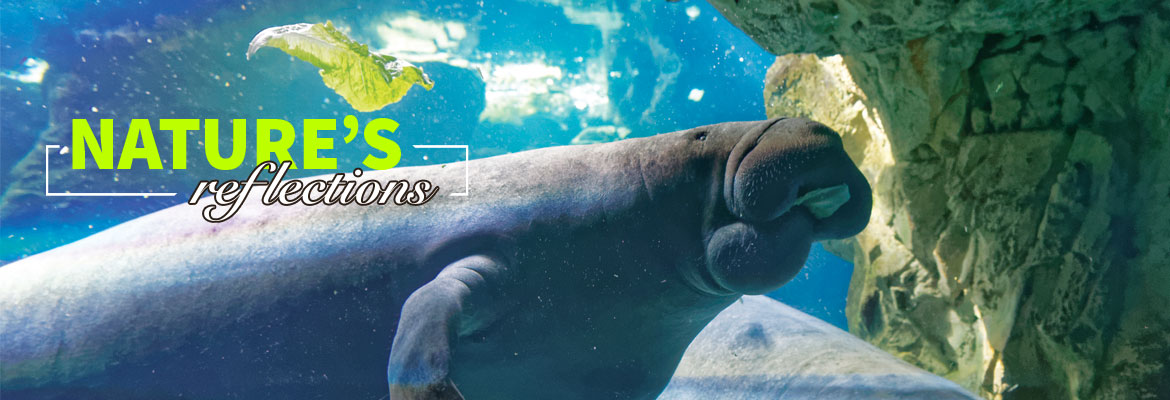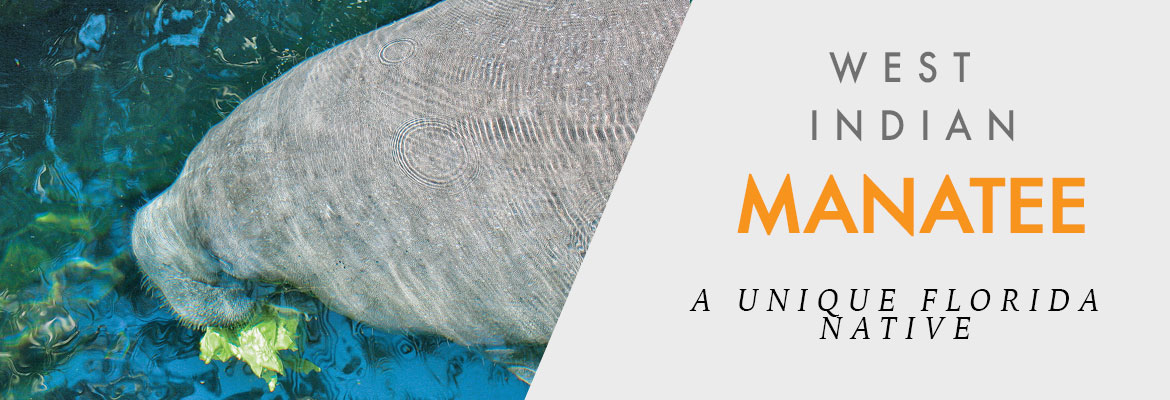
Nature’s Reflections-West Indian Manatee
A Unique Native Floridian
The West Indian manatee, (Trichechus manatus), is found throughout Florida’s shallow, slow-moving rivers, estuaries, saltwater bays and coastal areas. This large aquatic mammal with its innocent looking face reaches ten feet in length and weighs more than a thousand pounds. It has two flippers and a round elongated body that tapers to a flat, paddle-shaped tail.
Manatees spend most of their day traveling slowly, resting and eating five to ten percent of their weight per day. It breathes air through unique nostrils that close when it goes underwater and holds its breath for up to twenty minutes. Even when sleeping, manatees surface to breathe fresh air and submerge again without ever waking up. Manatees shed their old teeth and regrow new ones, as needed.
Female manatees mature at five years of age, and males at nine years. On average, one calf is born every two to five years after a 13 month gestation period. Mothers nurse their young for one to two years.

This plant-eating giant has no natural enemies and may live fifty to sixty years. Its friendly nature is its greatest threat. It associates the sound of boats and people with food and ventures too close to speeding boats. Manatee zones help to reduce watercraft collisions and provide better protection. They are protected by both federal and state laws making it illegal to harass, hunt, capture or kill this marine animal.
Sensitive to cold temperatures, manatees congregate in Florida’s springs where water temperatures remain constant and power plants that discharge warm water. Manatees can be killed or harmed by cold temperatures, ingesting fish hooks and line, litter, entanglement in crab trap lines, poaching and loss of natural habitat.
Column & photo by Sandi Staton




